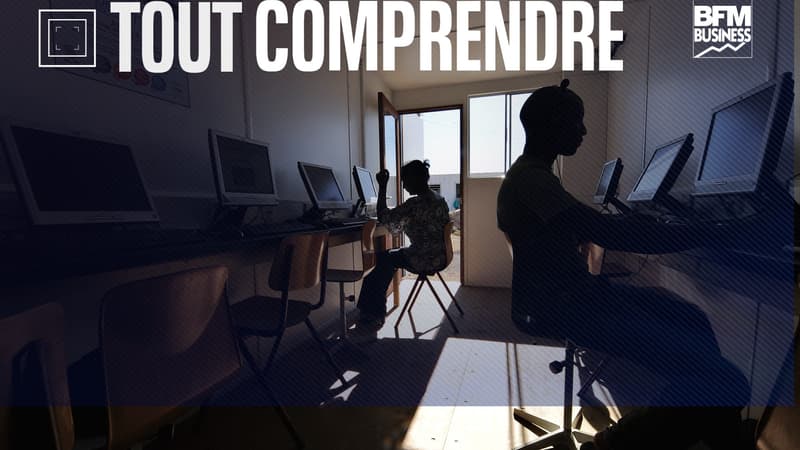The explosion at the Al-Ahli Arabi hospital in Gaza has become a textbook case for Osint (Open Source Intelligence) experts. This intelligence gathering technique obtained from information from open sources is little known to the general public.
What is Osint?
Osint is a tool to combat disinformation. All information is freely and legally accessible in cyberspace, in the media, in open access official documents or in confidential documents placed by mistake or carelessness on the Internet.
Thanks to free tools, a keen sense of observation, and deep experience, anyone can use them. These investigations are corroborated or denied by numerous experts to refine the analysis.
Who are the collaborators of these networks and how many are they? These are specialists in cybernetics and weapons, journalists and members of NGOs. Depending on the group, there may be hundreds of them that little by little enrich the published information. A kind of “blockchain” of information.
The example of the Boutcha massacre
Osint is used by cyber experts, whether they are ordinary citizens or professionals. The police, the army and intelligence services also use these techniques to obtain accurate information about an event or verify statements during investigations. In this way it is possible to determine places, times and, sometimes, identify people.
All this is done with a simple computer, connecting to social networks and with the knowledge to decipher and verify the data. Thus Osint was able to demonstrate that the Boutcha massacre by Russian troops was not a setup, contrary to claims spread on social networks. All the fake news on the subject has fallen before irrefutable facts that everyone can verify.
The case of Al-Ahli Arabi hospital
Here it all started with a video of the bombing in Gaza broadcast live on the channel Al Jazeera at the precise moment of the bombing of the hospital. In the background you can see a bright spot in the sky, its explosion and, a few seconds later, a fire at the Al-Ahli Arabi hospital.
Hamas blamed the Israeli army for this attack, putting between 500 and 800 deaths in the destruction of this hospital. On the Israeli side, this attack would actually be a failed rocket attack by Gaza-based groups. Therefore, these two statements were analyzed by Osint groups that examined the images of the damage caused spread on social networks, the trajectory of the ammunition, etc.
In addition, the GeoConfirmed platform determined the point of impact by analyzing the trajectory and transmitting images. A member of this group states that “one of the pieces fell in the courtyard of the Al-Ahli Arab hospital” providing the GPS coordinates that correspond to the hospital parking lot.
Finally, the damage caused to the terrain studied by the British collective Bellingcat would correspond more to a light rocket-type device than to an Israeli missile attack that would have created a large and deep crater that would cause much greater damage.
Was the rocket intercepted by the Israelis or was it a malfunction? None of the theses have been validated yet. There is also nothing I know about the death toll: 10 to 50 people for some, 200 to 800 for others. On these two points Osint cannot say anything, only an investigation could provide information. The Health Ministry of Hamas, in power in the Gaza Strip, reported a death toll of at least 471 people.
The US intelligence services, a few days after this attack, admitted that the theory of a rocket fired from Gaza is the most plausible. According to AFP, a note from the US intelligence services estimates that the death toll from the attack “is between 100 and 300.” He adds that the State of Israel “probably did not bomb the hospital.”
Where is the information and how to consult it?
To do research, all you need is access to information that is accessible to everyone. Of course, the Internet is the main source, using tools available to everyone. The basis is the advanced search of search engines such as Google or social networks (X, Facebook, etc.).
For geolocation it is Wikimapia or GeoHack and to find the place where an image was taken Google Maps is the most used tool with Onemilliontweetmap or SnapMap. It will also be necessary to examine the photo metadata to know the place and time a photo was taken and to know if retouching has changed it.
Sites of specialists or organizations also offer avenues for research. Jean-Marc Manach’s offers more advanced tools. This journalist even developed ManHack, a platform to help conduct research with access to 300 engines and databases.
The limits of Osint
Nothing is infallible, not even Osint. Its limitations are often pointed out by those who use it or, of course, by those who are accused of trying to misinform.
The first is that to verify information it is necessary to have left accessible traces, since it is not illegal piracy to obtain them. This is what Laurent Goychman points out in an interview with Veille Mag, a publication specialized in strategic information.
Human capabilities are another limit, as Jean-Marc Manach emphasizes in his training. Decrypting data can take hours or even days and a person may miss something important due to distraction or fatigue. Beginners can also make mistakes in interpretation that can have consequences.
Finally, artificial intelligence can also pose a problem. Currently, images or videos created with digital tools are more or less easily recognizable. But within a few years, technological advances could make verifications almost impossible. It will be necessary to develop new, more effective tools, which will require longer processing time and more powerful computers.
Source: BFM TV


